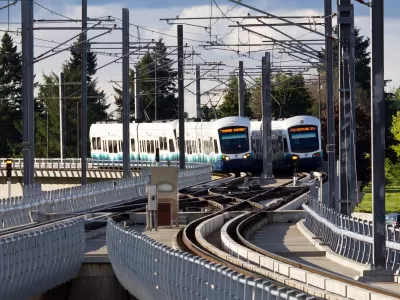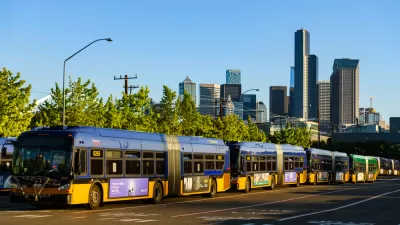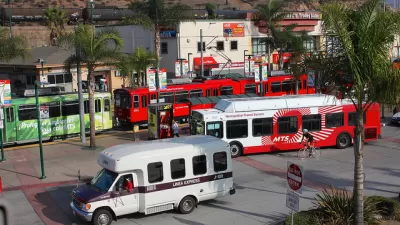Sound Transit is launching a fare-free program for young riders in the hopes of educating and recruiting future riders and making schools and jobs more accessible to transit-dependent youth.

Seattle’s Sound Transit is making transit free for youth starting in September in an effort to improve access to schools, jobs, and other activities for students and reduce fare compliance challenges. As Charles Pekow reports in a piece for Smart Cities Dive, “Sound Transit will recoup the lost revenue through funding the Washington state legislature allocated in March, when it passed the nearly $17 billion Move Ahead Washington mass transportation package.”
After the passage of the bill, the state’s transit agencies have scrambled to implement free transit programs before the October 1 deadline. “Some already provide free or reduced-price fares for youth. Some provide free transit cards; others check student IDs when young people board.” In the Seattle area, “Sound Transit launched the program on Everett Transit in July and will expand it to six other transit systems Sept. 1, with Washington State Ferries joining Oct. 1.” State Senator Marko Liias, chair of the legislature’s transportation committee, “said he expects the initiative will lead more high schoolers to take public transit to school, reducing the need for school buses.”
Based on data from the student program, the state will evaluate the possibility of free or reduced fares for other groups of riders.
FULL STORY: Seattle-area kids can ride transit free starting Sept. 1

Trump Administration Could Effectively End Housing Voucher Program
Federal officials are eyeing major cuts to the Section 8 program that helps millions of low-income households pay rent.

Planetizen Federal Action Tracker
A weekly monitor of how Trump’s orders and actions are impacting planners and planning in America.

Ken Jennings Launches Transit Web Series
The Jeopardy champ wants you to ride public transit.

Crime Continues to Drop on Philly, San Francisco Transit Systems
SEPTA and BART both saw significant declines in violent crime in the first quarter of 2025.

How South LA Green Spaces Power Community Health and Hope
Green spaces like South L.A. Wetlands Park are helping South Los Angeles residents promote healthy lifestyles, build community, and advocate for improvements that reflect local needs in historically underserved neighborhoods.

Sacramento Plans ‘Quick-Build’ Road Safety Projects
The city wants to accelerate small-scale safety improvements that use low-cost equipment to make an impact at dangerous intersections.
Urban Design for Planners 1: Software Tools
This six-course series explores essential urban design concepts using open source software and equips planners with the tools they need to participate fully in the urban design process.
Planning for Universal Design
Learn the tools for implementing Universal Design in planning regulations.
Heyer Gruel & Associates PA
Ada County Highway District
Institute for Housing and Urban Development Studies (IHS)
City of Grandview
Harvard GSD Executive Education
Toledo-Lucas County Plan Commissions
Salt Lake City
NYU Wagner Graduate School of Public Service





























